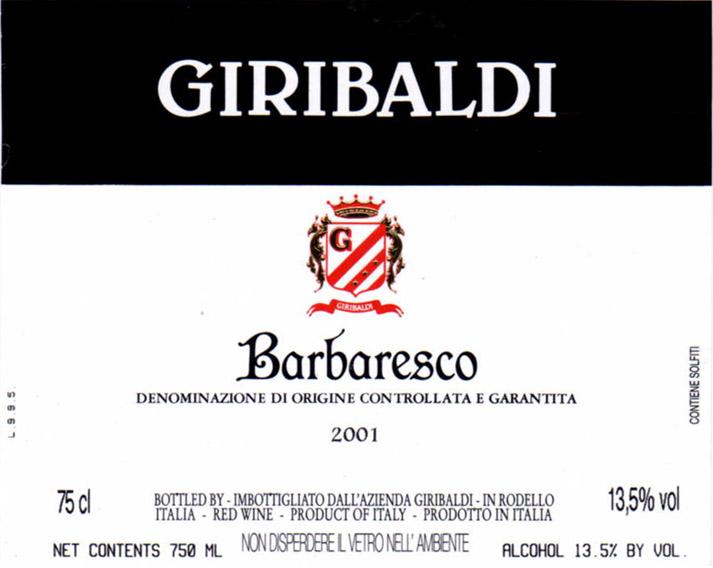2001 Barbaresco Nebbiolo
The 2001 Giribaldi Barbaresco showcases the exquisite character of Nebbiolo from the esteemed Barbaresco region. This elegant red wine displays a medium body, featuring a beautifully balanced brightness that elevates its profile. The fruit intensity is prominent, revealing enchanting notes of cherry and rose petals, seamlessly intertwined with subtle earthy undertones. Tannins are notable yet refined, contributing to the overall structure and age-worthiness of this remarkable vintage. With a touch of liveliness, this Barbaresco impresses with its dry finish, making it a delightful companion for a variety of rich dishes. Each sip captures the essence of its terroir, embodying the sophistication and enduring allure of this iconic Italian appellation.
The 2001 Giribaldi Barbaresco showcases the exquisite character of Nebbiolo from the esteemed Barbaresco region. This elegant red wine displays a medium body, featuring a beautifully balanced brightness that elevates its profile. The fruit intensity is prominent, revealing enchanting notes of cherry and rose petals, seamlessly intertwined with subtle earthy undertones. Tannins are notable yet refined, contributing to the overall structure and age-worthiness of this remarkable vintage. With a touch of liveliness, this Barbaresco impresses with its dry finish, making it a delightful companion for a variety of rich dishes. Each sip captures the essence of its terroir, embodying the sophistication and enduring allure of this iconic Italian appellation.




